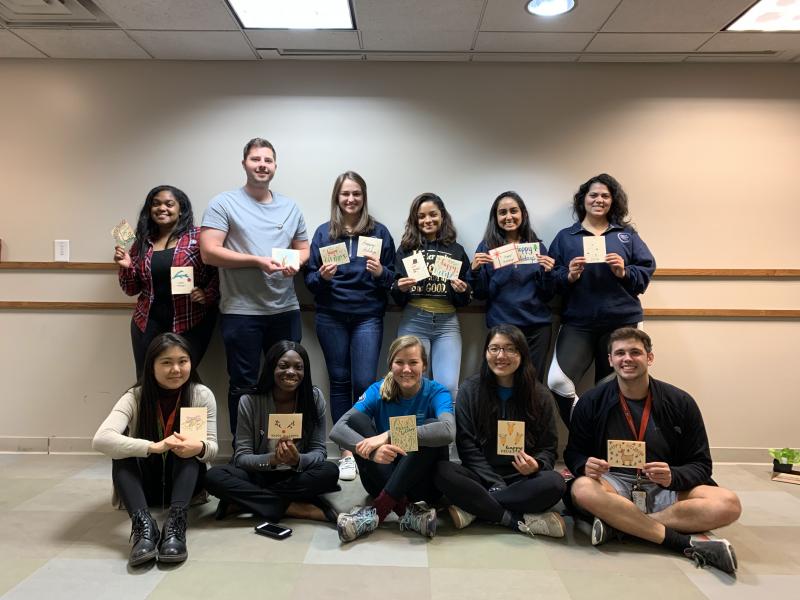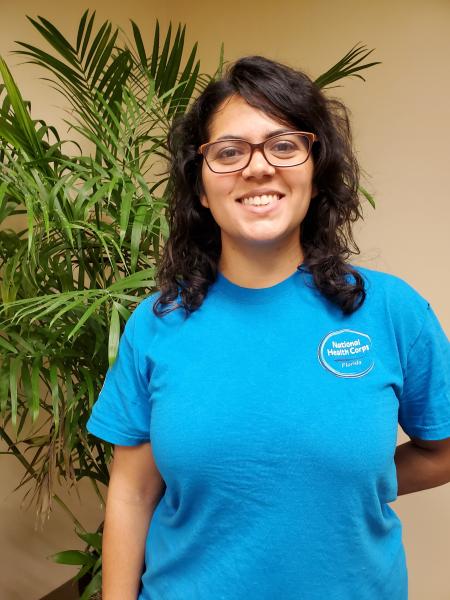The New Year is upon us and the holidays are finally coming to an end. Holidays typically signify filling our lives with warmth, joy, family, and friends – which can usually lead to a pretty full schedule. For those of us serving in public health sectors, that is no exception. It means not only juggling our families and holiday events around ever-changing clinical hours but also finding ways to make the holidays brighter for our clients and community members who may not have the same abilities to celebrate as we do. This is especially true for National Health Corps members here in Florida.
National Health Corps members serve communities in need here in Jacksonville almost every day. We help clients all across the greater Jacksonville area apply for Medicaid and food stamp benefits, find safe housing, connect with job opportunities, get affordable prescriptions, receive medical and dental services, learn about healthy eating, obtain prenatal care, and so much more. With everything we do on a daily basis, what more could we possibly do during the holidays? The answer is a lot.
Jacksonville area apply for Medicaid and food stamp benefits, find safe housing, connect with job opportunities, get affordable prescriptions, receive medical and dental services, learn about healthy eating, obtain prenatal care, and so much more. With everything we do on a daily basis, what more could we possibly do during the holidays? The answer is a lot.
People tend to forget that not everyone is able to go home for the holidays, afford presents for their kids, have a safe space to celebrate, or even have food to eat. Throughout the early holiday season, I personally had my clients at River Region Human Services come to me with holiday distress. I spent time referring them to other local non-profits, such as the Salvation Army’s Angel Tree and Toys for Tots, to sign-up their kids to receive gifts. I told them about local churches and community centers where they could get holiday food baskets. I volunteered at local Farm Share events with other members at River Region to ensure the communities I served were able to get food to make holiday meals. I assisted the Mayport United Services Organization (USO) in their annual toy drive and Pizza with Santa for local military families. I held a Christmas tree decorating day in our clinic to allow some of the older children of our clients to be able to decorate a tree since some of them wouldn’t even have a tree at home. These are just things I did as a part of my service with National Health Corps AmeriCorps or on my own. I couldn’t stand to know there was something more I could do and then not do it. And I’m not the only one – every NHC member did something to contribute this holiday season.
 NHC members took to several holiday group service projects and other acts of service throughout the holidays. Some of us harvested and prepared food for the Clara White Mission. A handful of us helped bring holiday joy at The Arc, a rehabilitation center for differently-abled individuals, at their annual holiday party. A group of us honored our veterans for the holidays by laying wreaths at the Jacksonville National Cemetery with Wreaths Across America. We also had members make Christmas cards and ornaments with the elderly at Brooks Rehabilitation Skilled Nursing center. A few of us volunteered at the Children’s Christmas Party of Jacksonville. We made hundreds of holiday cards for individuals in medical recovery that can’t go home for the holidays. These are just a few pieces of how we contributed.
NHC members took to several holiday group service projects and other acts of service throughout the holidays. Some of us harvested and prepared food for the Clara White Mission. A handful of us helped bring holiday joy at The Arc, a rehabilitation center for differently-abled individuals, at their annual holiday party. A group of us honored our veterans for the holidays by laying wreaths at the Jacksonville National Cemetery with Wreaths Across America. We also had members make Christmas cards and ornaments with the elderly at Brooks Rehabilitation Skilled Nursing center. A few of us volunteered at the Children’s Christmas Party of Jacksonville. We made hundreds of holiday cards for individuals in medical recovery that can’t go home for the holidays. These are just a few pieces of how we contributed.
I know. You’re probably thinking, “That’s great and all, but what does that have to do with public health? How do those things actually help?” While most of that doesn’t really seem to play into public health, most of it does. See, public health isn’t just vaccines and clean water. It is feeding our communities. It is creating safe spaces for our differently-abled. It is decreasing the effects of mental health issues by being supportive. It is creating a stronger bond within our communities. While each act might seem insignificant, doing them creates so much good. So let’s all make a resolution to take that good into the New Year and all contribute to building a better community.

This blog was written by NHC Florida Member Ariel Pereira.
Ariel serves at River Region Human Services as a Patient Navigator.
